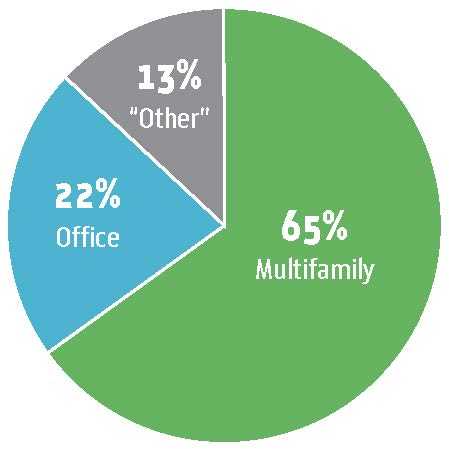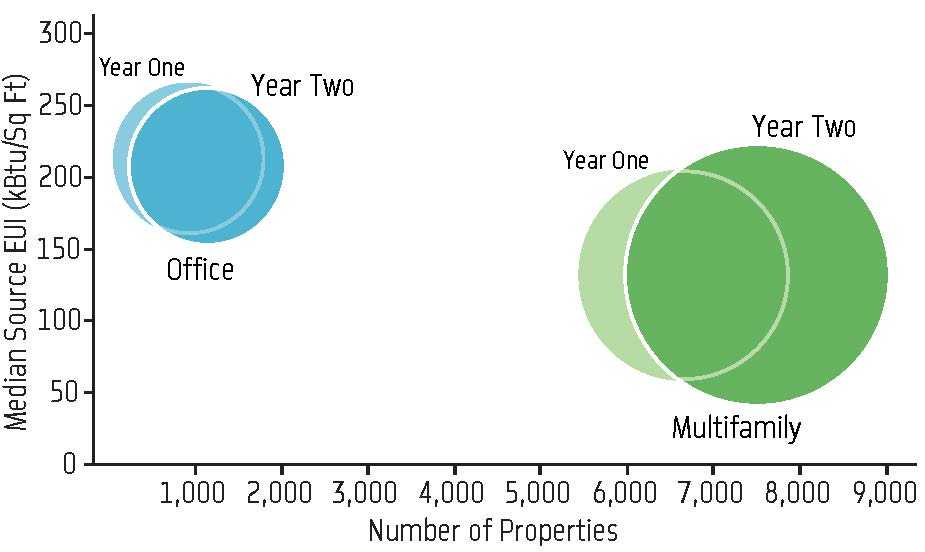The Year Two benchmarking report has a wealth of eye-opening data—and now energy use for multifamily buildings is available online.
Today, New York City released its second Local Law 84 Benchmarking Report, analyzing the 2011 building energy use data collected from 24,000 buildings totaling more than 2 billion square feet. It is the largest set of such data in the U.S. by far, and for the first time, New Yorkers can compare two straight years of benchmarking data for the city’s large buildings.
Building energy use is responsible for a whopping 74 percent of greenhouse gas (GHG) emissions in New York City, so comparative analysis of this data is crucial. As building owners benchmark, they and analysts will be able to track the effects of energy efficiency measures over time and identify new opportunities for improvement.
The report is rich in findings and data points, so this post will focus on what it tells us about energy use in New York’s multifamily buildings. Multifamily properties—apartments, condos, co-ops, and mixed-use versions of those types—make up most of the benchmarked building stock, 65 percent.

Credit: New York University
We tend to have a more personal connection with the buildings we live in—after all, they’re our homes—so New Yorkers will want to know how their multifamily buildings measure up. Here’s what the report tells us:
- Multifamily buildings in New York City have a median source energy-use intensity (EUI) of 132.1, very close to the national median of 130 derived from the government’s Residential Energy Consumption (RECS) 2005 database and virtually the same as found in New York’s Year One benchmarking report (which looked at 2010 data).
- Compliance with Local Law 84 was high, with 81 percent of multifamily buildings reporting their data.
- As was found in the Year One report, energy use varies a lot among buildings with similar uses, by a factor of about three to six. This shows how much room for improvement there is in bringing the lower performers up to par. However, the multifamily sector shows less variation in EUIs than the office and retail sectors.
- The most energy-consuming, lowest quartile of multifamily properties contributes a very large share of GHG emissions, amounting to five percent of all GHG emissions for New York City. With the new data, the city can better target its efforts to improve multifamily buildings.
- The report notes: “The most significant increase in median EUIs [by property age] for the multifamily sector occurs in properties constructed in the 1970s.” Why are multifamily buildings from the ’70s showing this increase? This is an area for further analysis by the city and its research partners.
- The report found no substantive difference between the EUIs for subsidized and unsubsidized housing.
- Zip codes with the highest median multifamily EUIs tend to have higher median household incomes and larger median floor areas—with some notable outliers, meriting further study.
- Multifamily Working Grades. Multifamily buildings do not receive ENERGY STAR scores like office, government, and many other types of buildings. To aid building owners and tenants in understanding and comparing the data, the city has classified benchmarked buildings into quartiles that represent Working Grades. So an EUI of 109 or lower is an A, an EUI of between 109 and 132 is a B, and so on.
For the 4 million New Yorkers who live in large apartment buildings, the Year Two report is an invaluable tool for understanding building energy use. For the first time, they also have direct access to data on their own building’s energy consumption. These New Yorkers can now go online and find out how much energy their building uses per square foot and how that compares to similar apartment buildings. And from now on, they’ll be able to track their building’s energy use annually. New York is the first U.S. city to publicly disclose this information for multifamily buildings; it will be joined within a few years by Chicago and Washington, DC.
The same way we all look at nutrition labels at the grocery store and compare MPG stickers when buying a car, millions of apartment dwellers in New York now have transparent information about buildings’ energy use.

NYC properties benchmarked in Years One and Two, office vs. multifamily, graphed according to median source EUI. Credit: University of Pennsylvania and NYC Mayor’s Office.
